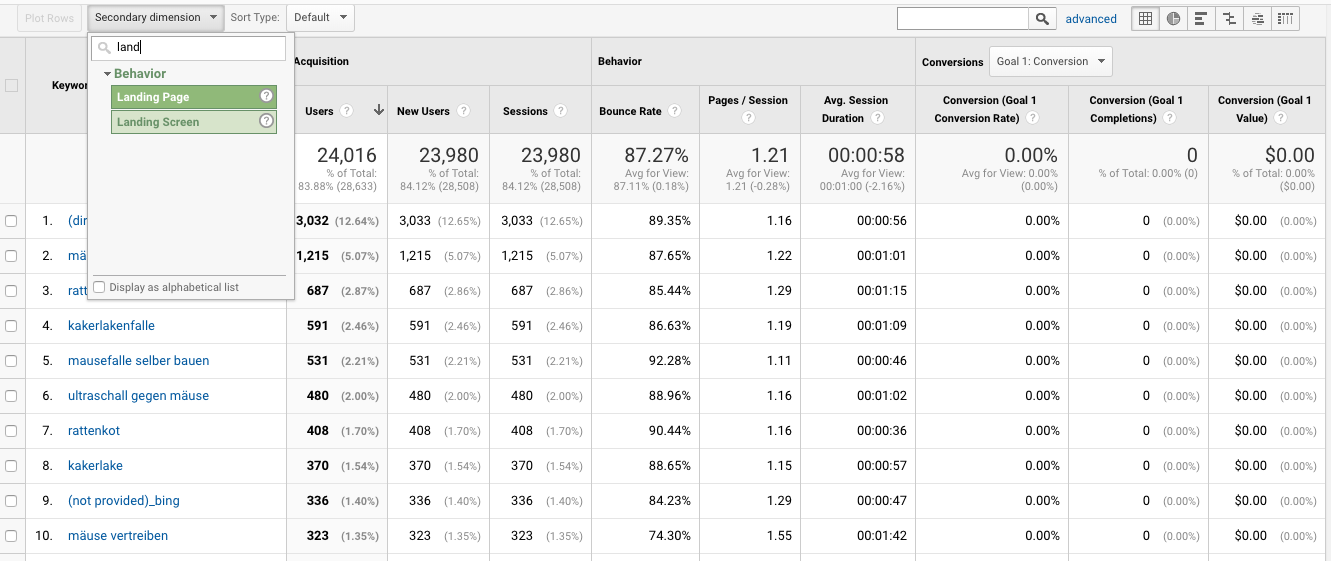The Power of Google Analytics Secondary Dimension: Taking Full Advantage Of Insights
The Power of Google Analytics Secondary Dimension: Taking Full Advantage Of Insights
Blog Article
Unlocking the Power of Additional Measurement Analytics for Boosted Information Insights and Decision-Making
In the world of information analytics, main dimensions typically take the limelight, however the true deepness of insights lies within the realm of second measurements. By using the power of secondary dimension analytics, companies can reveal surprise trends, reveal connections, and extract extra significant conclusions from their data.
Importance of Additional Measurements
Exploring the value of additional measurements in analytics introduces the covert layers of information insights vital for informed decision-making in different domain names. Second measurements supply a much deeper understanding of primary data by supplying added context and perspectives. By incorporating additional measurements right into analytics, companies can remove more nuanced and detailed understandings from their datasets.
One trick importance of additional dimensions is their capability to section and categorize key information, permitting a much more thorough analysis of specific parts within a dataset. When looking at the information as a whole, this division allows services to determine patterns, patterns, and outliers that might not be apparent. Additional measurements assist in uncovering relationships and reliances in between various variables, leading to more exact forecasting and anticipating modeling - secondary dimension.
Furthermore, secondary measurements play an essential duty in improving information visualization and coverage. By adding additional measurements to visualizations, such as charts or charts, analysts can produce extra informative and informative representations of data, promoting better communication of searchings for to stakeholders. Overall, the integration of additional measurements in analytics is crucial in unlocking the full potential of data and driving evidence-based decision-making.
Secret Advantages of Making Use Of Second Measurements
Utilizing secondary dimensions in analytics offers organizations a tactical advantage by enhancing the depth and granularity of data understandings. One crucial advantage of including second measurements is the capability to segment and filter data, permitting a much more in-depth evaluation of details elements within a dataset. This division allows companies to acquire a more nuanced understanding of their audience, efficiency metrics, and various other critical data points. By studying data using second dimensions such as time, location, tool type, or user demographics, companies can uncover patterns, patterns, and correlations that may or else stay surprise.
Moreover, the application of additional dimensions boosts the context in which main data is translated. By leveraging secondary dimensions in analytics, companies can harness the full possibility of their data to drive far better decision-making and achieve their organization goals.
Advanced Information Analysis Methods
A deep study advanced data evaluation techniques exposes innovative approaches for extracting useful understandings from complex datasets. One such method is machine knowing, where algorithms are used to recognize patterns within information, predict outcomes, and make data-driven decisions. This method enables for the automation of logical design structure, making it possible for the handling of large quantities of data at a quicker rate than typical approaches.
An additional advanced technique is predictive analytics, which uses statistical formulas and artificial intelligence strategies to anticipate future end results based upon historical data. By analyzing fads and patterns, services can expect client behavior, market trends, and potential threats, equipping them to make proactive choices.
In addition, text mining and sentiment evaluation are beneficial methods for removing understandings from unstructured information sources such as social media remarks, customer evaluations, and study actions. By evaluating message data, companies can understand consumer opinions, recognize emerging patterns, and enhance their service or products based upon comments.
Enhancing Decision-Making Through Second Dimensions

Enhancing decision-making through second measurements allows services to make more informed and targeted critical options. For instance, by segmenting consumer information based on second measurements like buying background or involvement levels, companies can customize their advertising techniques to specific target market segments, bring about enhanced conversion prices and client complete satisfaction. Secondary dimensions can help determine connections and partnerships in between various variables, making it possible for companies to make data-driven choices that drive development and profitability.
Executing Additional Dimension Analytics
When integrating secondary dimensions in analytics, companies can unlock deeper understandings that drive tactical decision-making and improve overall performance. Applying second measurement analytics needs a structured method to guarantee reliable use of this powerful tool. The very first step is to determine the essential metrics and dimensions that straighten with the organization's tactical objectives. This requires comprehending the specific concerns the organization looks for to answer and the information points called for to address them.

In addition, companies need to utilize progressed analytics devices and modern technologies to enhance the procedure of integrating additional dimensions. These tools can automate information handling, evaluation, and visualization, enabling organizations to focus on analyzing understandings instead of hands-on data adjustment.
Verdict
In final thought, secondary dimension analytics play a vital role in boosting information understandings and decision-making processes. By utilizing innovative data analysis techniques and carrying out second dimensions efficiently, companies can open the power of their information to drive strategic company decisions.
In the world of information analytics, key measurements typically take the spotlight, but the true depth of insights lies within the world of additional measurements.Making use of second measurements in analytics supplies companies a critical advantage by augmenting the deepness and granularity of data insights. By leveraging secondary dimensions in analytics, companies can harness the complete capacity of their data to drive better decision-making and achieve their service objectives.
Implementing information validation processes and regular audits can aid preserve data quality and dependability.
By using sophisticated information analysis techniques and applying secondary dimensions successfully, organizations can unlock the power of their view it now data to drive strategic organization decisions.
Report this page